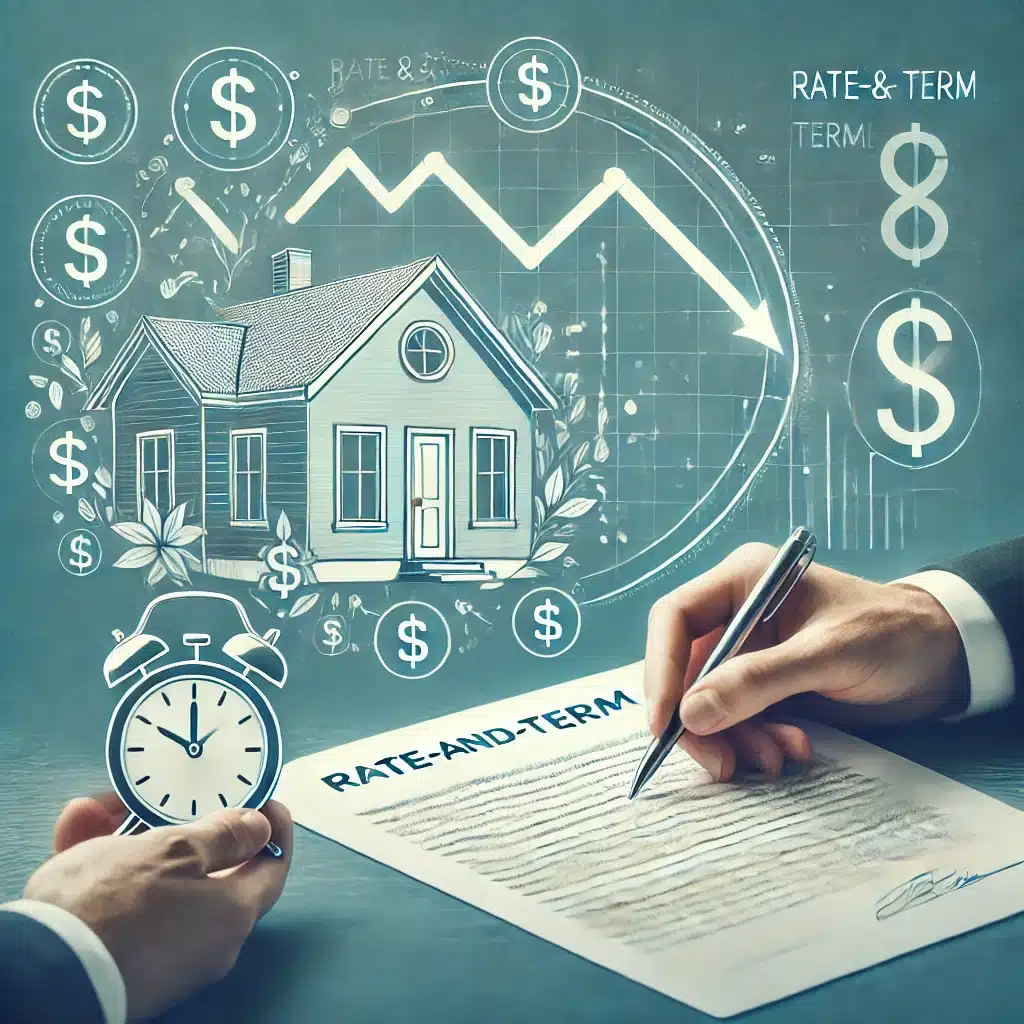Exploring a refinance because you want to lower your monthly mortgage payment? A rate-and-term refinance is one of the most reliable methods for meeting this important financial goal.
During the rate-and-term refinancing process, you’ll pay off your old mortgage by taking out a new mortgage, one with a lower interest rate, a longer term, or both. Here’s everything you need to know.
What is the rate?
The rate is the interest rate. In a rate and term refinance, the goal is to swap a higher interest rate for a lower interest rate.
By lowering your interest rates, you lower the overall cost of the mortgage, the balance you’ll ultimately owe, and, in term, your payments. The better the rate, the lower your payment is likely to be.
See also: The Ultimate Guide to Mortgage Interest Rates: What You Need to Know
What is the term?
The term is the length of the mortgage. For example, if you have a 15-year mortgage, then the term is 15 years.
Changing the term of the mortgage to a 30-year mortgage reduces your payments by a significant margin because you have so much more time to work with.
When should you consider a rate and term refinance?
There are a few times when it is a very good idea to consider a rate and term refinance.
- When average mortgage interest rates have dropped. Overall interest rate deductions don’t guarantee a reduction in your rate, but such reductions can improve your chances.
- You’ve seen a substantial increase in your credit score. A better credit score will nearly always result in lower interest rates, even if average mortgage interest rates haven’t budged.
- When your DTI has dropped. Lowering your debt to income ratio can also have a positive impact on your interest rates.
- When you’ve obtained sufficient equity in the home. Most lenders want you to achieve at least 20% equity in your home before you attempt to refinance.
- When you need a lower payment for other reasons. If your income has recently dropped, for example, a rate-and-term refinance may make it more feasible to remain in your home.
You should also evaluate whether the rate and term refinance is worth it. You’ll have to pay closing costs. Closing costs will amount to around 2% to 6% of your mortgage, and some lenders will want you to pay them up front. Some will allow you to roll them into the loan, instead. Either way, you want to make sure that it won’t take you long to make up the difference in closing costs with the overall savings you can attain.
See also: How to Refinance Your Mortgage, Step-by-Step
Are there other advantages to a rate-and-term refinance?
Depending on how you structure the refinance, you may end up paying significantly less on the overall cost of the loan because your interest rate will go down. This may not be the case if you stretch out your loan term, however.
It’s important to work with a qualified mortgage professional who understands your financial goals and who can help you meet them.
Refinance Your Home Loan Today
Are you ready to explore a rate and term refinance?
Schedule your free consultation with Alex Doce! Alex puts borrowers first every time, and can help you decide whether this form of refinancing is right for you.
